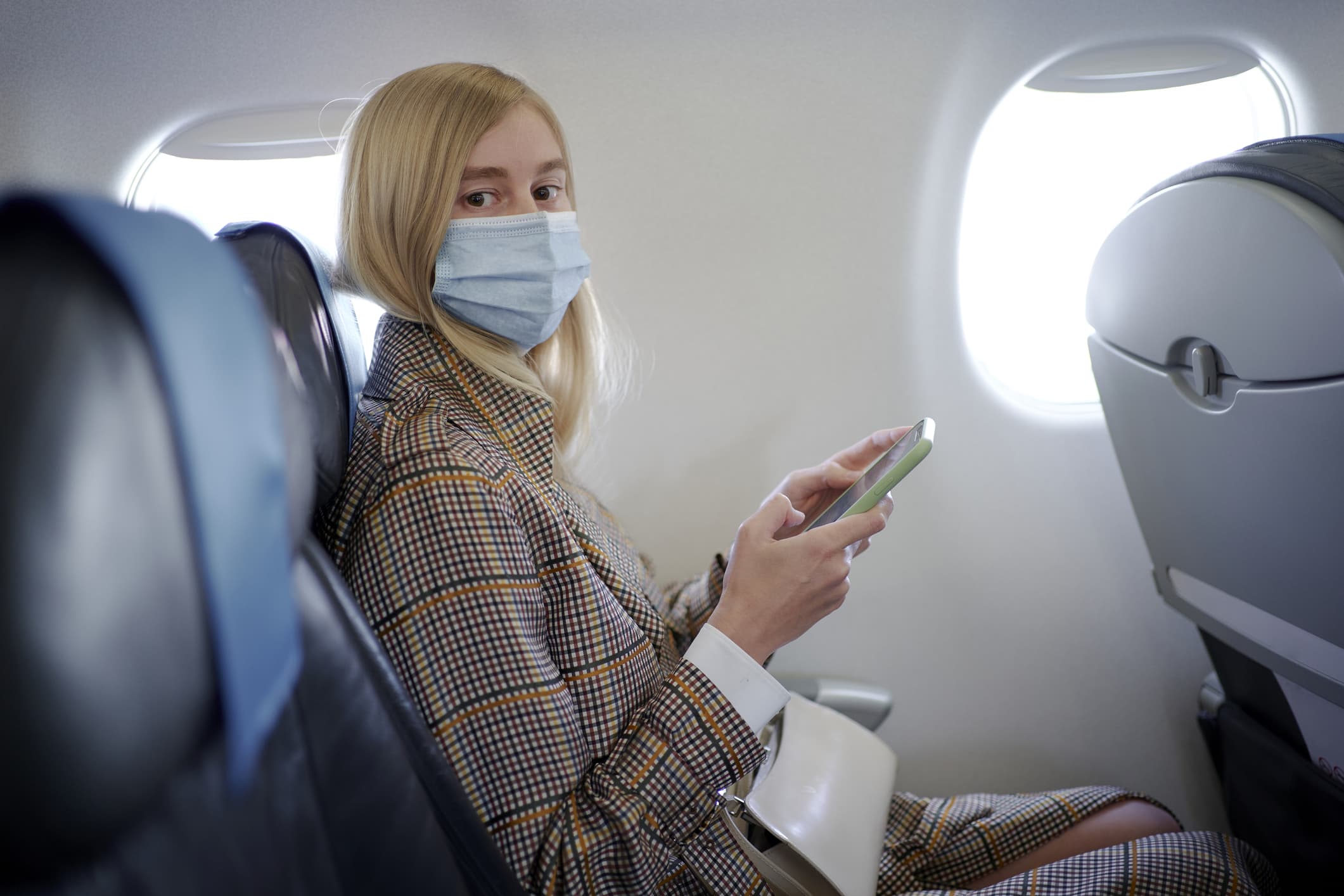
Before the Covid-19 pandemic, airplanes and airports were considered notoriously germy. With high-touch surfaces like tray tables and cramped spaces that make distancing difficult, there are lots of potential ways to spread germs and viruses.
But if you’re planning to travel this holiday season, airports and aircrafts will look different — potentially cleaner than usual.
The new CNBC documentary, “Shepard Smith Reports: Air Travel in Turmoil,” which airs Wednesday at 8 p.m. ET, highlights some of the steps that American Airlines is taking to keep travelers safe during the pandemic, including how aircrafts are cleaned. Here are some of the top techniques.
Using high-tech disinfectants
To disinfect the larger surfaces of American Airlines aircrafts, like the walls, side panels, flight deck and entryways, these areas are sprayed every seven days with an extra efficient “electrostatic” cleaning agent.
This high-tech disinfectant works by charging antimicrobial liquid as it passes through a nozzle, according to the Environmental Protection Agency. Antimicrobial droplets with a positive electrical charge are attracted to negatively charged environmental surfaces, and cling to hard, non-porous environmental surfaces.
The spray creates “an ionized protective layer that has these little needles these little swords,” Jessica Tyler, president of cargo and vice president of airport excellence for American Airlines told CNBC’s Shepard Smith. “It breaks apart the outer part of the virus, rendering it ineffective, basically.”
Electrostatic spray has been shown to provide seven-day protection against bacteria, mold and viruses, including the virus that causes Covid-19.
Cleaning 81 high-touch surfaces
Covid-19 is mainly spread through respiratory droplets and aerosolized particles when an infected person coughs, talks, sneezes or breathes in close proximity to others. These virus-containing particles can also survive on surfaces and transfer to people through touching the object, and then touching your nose, mouth or eyes. So it’s important to disinfect high-touch surfaces.
“The extreme measures that we’re taking to clean the aircraft start with cleaning the aircraft before every single flight,” Tyler said.
There are 81 specific touchpoints (such as handrails, seatbelts, seats, air vents and bathrooms) that get wiped down on American Airlines aircraft. A team of five or six people use a hospital-grade disinfectant to clean these surfaces before each flight, Tyler said.
Clean airflow in the cabin
Interestingly, viruses and germs don’t spread easily on an aircraft, due to how the air is filtered and circulated in the cabin, according to the CDC.
Air in the cabin of an aircraft is refreshed every two to four minutes, Henry Harteveldt, atmosphere researcher and travel analyst, told CNBC. The air that you breathe inside of an aircraft is a combination of outside air and air that has been filtered through HEPA (high-efficiency particulate air) filters, similar to those used in hospitals and some portable air purifiers. HEPA filters can capture at least 99.97% of airborne particles.
Even with clean air on board, it’s important to wear a mask to prevent spreading your own respiratory droplets to another person in close proximity on the flight.
Traveling by any mode of transportation can increase your chance of getting and spreading Covid-19, according to the Centers for Disease Control. Airports and airplanes are riskier than, say, traveling by car, because it’s hard to maintain social distance on an aircraft, as well as in airport terminals and security lines.
Certain steps, like wearing a mask and practicing good hand hygiene, can reduce your risk.
Watch “Shepard Smith Reports: Air Travel in Turmoil” Wednesday, Oct. 14, at 8 p.m. ET on CNBC.
Don’t miss: The 6 best credit cards for shopping at Costco




